How to Connect a Monitor to a Dell Computer
Summary: This article provides information about how to connect a monitor or projector to a Dell desktop, all-in-one, or laptop. Learn about the different types of video connectors, configure video settings and helpful links to troubleshooting guides. ...
Instructions
There are several ways to connect a computer to the monitor or projector. The devices may have different types of video connectors, VGA, DVI, HDMI, DisplayPort (DP), USB-C, and so on. The process to connect a computer to the monitor or projector is the same. The instructions in this article provide information about connecting a computer to a monitor or projector.
For information about connecting to a Dell Wireless monitor, see the Dell Knowledge Base article Guide to Dell Wireless Monitors.
For information about connecting a computer to a TV, see the Dell Knowledge Base article How to Connect a Laptop to a TV.
To identify the type of video connector that is available on the computer and the monitor or projector. Using the correct type of video cable helps avoid video or display issues.
There are two types of video transmission methods: Digital and Analog (see the table below). Each video connector is capable of either digital or analog video signal transmission. Analog video connectors such as S-video, Composite, VGA, SVGA, and DVI (analog) do not support playback of protected high-definition digital content, such as Blu-ray movies, over an analog connection, you will probably get an error message or the movie play at lower quality resolutions.
- Dell desktop: The video connectors are on the back of the computer. If your Dell desktop has a dedicated graphics card (GPU), you must use the video connector that is available on the graphics card (GPU).
- Dell all-in-one: The video connectors are on the back of the computer.
NOTE: Video-out connector to connect a secondary display is not available on all Dell all-in-one computers. To identify if the Dell all-in-one computer supports a secondary display, see the documentation of your Dell desktop or all-in-one.
- Dell laptop: The video connectors are available on the back, left, or right side of the laptop. To learn more about what video connectors are available, see the documentation of your Dell laptop.
- Dell monitor: The video connectors are available on the back of the monitor. To learn more about what video connectors are available, see the documentation of your Dell monitor.
- Dell projector: The video connectors are available on the back of the projector. To learn more about what video connectors are available, see the documentation of your Dell projector.
When the video connector on the back of the computer does not match with the video connector on the monitor or projector, you may need an adapter or converter. See the using adapters or converters section of this article.
| Connector | Connector | Cable | Description |
|---|---|---|---|
| USB-C (with DisplayPort or Thunderbolt 3) | 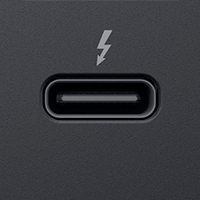 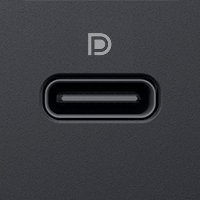 |
  |
The USB-C connector, also known as USB Type-C, is used to transmit digital audio and video signals simultaneously on a single cable. Device manufacturers can enable alternate modes like DisplayPort, Thunderbolt 3, or HDMI that can transmit both video and audio signals using the same cable. See the device specifications to identify if the USB-C port on your device supports one of these alternate modes.
NOTE: A USB-C port that does not support DisplayPort or Thunderbolt 3 alternate mode cannot transmit audio or video signals.
|
| DisplayPort (DP) or mini-DisplayPort (mDP) |  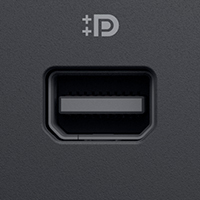 |
 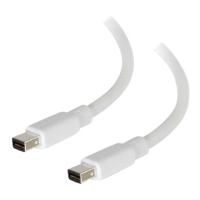 |
The DisplayPort connector is used to transmit digital audio and video signals simultaneously, although each is optional and can be transmitted without the other. There are several versions of DisplayPort standards. With each latest version of DisplayPort, new features are added. The DisplayPort connector on the device and the DisplayPort cable are designed with one specific version of DisplayPort standard. For example, DisplayPort version 1.2 and above supports Multi-Stream Transport (MST) or daisy-chaining compatible monitors. DisplayPort cables and ports may have either a "full-size" connector or a "mini" connector. These connectors differ only in their physical shape, the capabilities of DisplayPort are the same regardless of which connector is used. Using a mini DisplayPort (mDP) connector does not affect the performance or feature support of the connection. For more information about DisplayPort, see https://en.wikipedia.org/wiki/DisplayPort  . . |
| HDMI | 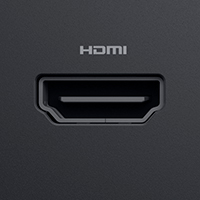 |
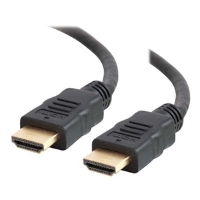 |
The HDMI (High-Definition Multimedia Interface) connector is the most common digital audio/video connector that is available on many computers, monitors, TVs, and projectors. HDMI supports the transmission of both video and audio signals on a single cable. There are several versions of HDMI standards. With each latest version of HDMI, new features are added. The HDMI connector on the device and the HDMI cable are designed with one specific version of the HDMI standard. For example, HDMI version 2.0a and above supports High Dynamic Range (HDR) video. There are five types of HDMI connectors: Standard HDMI, dual-link HDMI, mini HDMI, micro HDMI, and HDMI automotive connector. For more information about HDMI, see https://en.wikipedia.org/wiki/HDMI  . . |
| DVI |  |
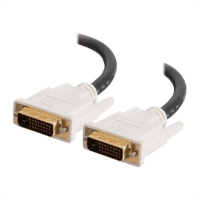 |
The DVI connector is used to transmit analog or digital video signals depending on the type of DVI connector that is available. The DVI connector on a device can be one of three types, depending on which signals it implements: DVI-A (analog only), DVI-D (digital only, single-link or dual-link), and DVI-I (combines digital and analog in the same connector; digital may either support single or dual link). The pin configuration in each type of connector is unique. For more information about DVI, see https://en.wikipedia.org/wiki/Digital_Visual_Interface  . . |
| VGA or SVGA | 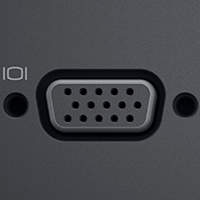 |
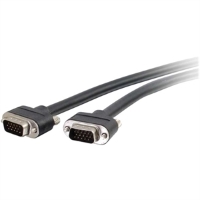 |
The VGA or SVGA connector is the most common video connector that is available on many devices. The standard VGA monitor interface is a 15-pin D-subminiature connector. For more information about VGA, see https://en.wikipedia.org/wiki/Video_Graphics_Array  . . |
| Component video | 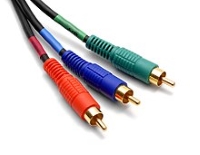 |
The RGB component connector is used to send an analog video signal to a secondary display device, such as a TV or projector. The cable has three connectors (red, green, and blue) for video. The digital component video connector became popular in both computers and home-theatre applications. | |
| RCA (composite) |  |
The RCA or composite connector is used to send an analog video signal to a secondary display device, such as a TV or projector. The cable has 1 connector (yellow) for video + 2 connectors (white and red) for the left and right audio channels. | |
| S-video |  |
The S-video connector is used to send an analog video signal to a secondary display device, such as a TV or projector. |
After identifying the video connectors and you have a compatible video cable, connect the computer to the monitor or projector.
- Connect the power cable to the monitor or projector, and the wall outlet.

Illustration of connecting the monitor to a power outlet. - Connect the video cable to the monitor or projector, and the computer.
- For multiple monitors, connect the other monitors to an available video connector on the computer. To learn more, see the Dell knowledge base article How to Set up Multiple Monitors.
- For help with connecting a monitor to a Dell docking station, see the Dell knowledge base article How to Connect and Set Up a Docking Station With a Laptop.
- For help with connecting to a Dell wireless monitor, see the Dell knowledge base article Guide to Dell Wireless Monitors.
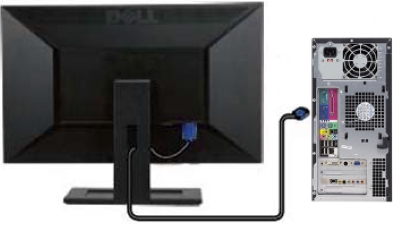
Illustration of connecting a video cable between the monitor and the desktop.
Illustration of connecting a video cable between the monitor and the laptop. - Turn on the monitor or projector.
- Turn on the computer.
- Select the correct video source on the monitor or projector. For example, if you are using the HDMI 1 video connector on the monitor, set the source to HDMI 1. To learn more about how to change the video source, see the documentation of your Dell monitor or projector.
- Microsoft Windows uses Windows Plug and Play to automatically detect and set up the monitor or projector.
NOTE: Most monitors and projectors work without installing any drivers by using Microsoft's Plug and Play.
When the video connector on the back of the computer does not match the video connector on the monitor or projector, you may need an adapter or converter. See the Using adapters or converters section of this article.
For optimal video performance, download and install the latest video drivers from the Dell.com/support website. To learn more about downloading and installing the drivers on a Dell computer, see the Dell knowledge base article How to Download and Install a Device Driver.
Configure the screen resolution, color depth, refresh rate, and font size.
Based on the operating system that is installed on your Dell computer, see the Dell knowledge base article:
When the video connector on the back of the computer does not match the video connector on the monitor or projector, you may need an adapter or converter. See the table below for examples of adapters or converters that are available.
For example, if the computer has an HDMI connector and the monitor has a DVI connector, you can use an HDMI to DVI adapter.
| Source (computer) | Display (monitor or projector) | Illustration |
|---|---|---|
| DVI | DVI (digital or analog) or VGA (analog only) |  |
| HDMI | DVI or VGA | 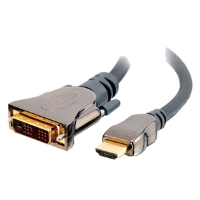  |
| DisplayPort (DP) or mini-DisplayPort (mDP) | HDMI or DVI | 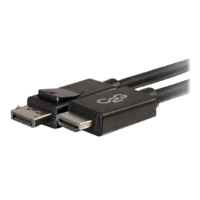 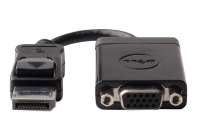 |
| USB-C (with DisplayPort or Thunderbolt 3) | HDMI, DisplayPort (DP), or mini-DisplayPort (mDP) | 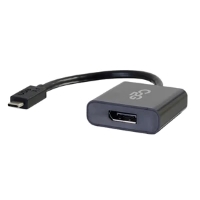 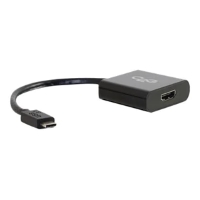 |
Check out some of our simplified troubleshooting guides.
- Solve common display issues if your computer turns on but there is no display on the monitor.
- Fix common display issues with your laptop.
- Resolve common touchscreen issues on laptops with a touchscreen-enabled display.
- Set up dual monitors or multiple monitors with your computer.
- Troubleshoot common display issues with dual monitors or multiple monitors.
Additional Information
Helpful videos
How to Connect Two Monitors to One Computer (Official Dell Tech Support on YouTube)
Duration: 01:37
When available, closed caption (subtitles) language settings can be chosen using the Settings or CC icon on this video player.
How to Connect Wireless Monitor (Official Dell Tech Support on YouTube)
Duration: 02:26
When available, closed caption (subtitles) language settings can be chosen using the Settings or CC icon on this video player.
Dell Monitor Driver Installation (Official Dell Tech Support on YouTube)
Duration: 01:54
When available, closed caption (subtitles) language settings can be chosen using the Settings or CC icon on this video player.
 More information and support for your Dell monitor, desktop, laptop, or tablet screen can be found on our Monitor Support site.
More information and support for your Dell monitor, desktop, laptop, or tablet screen can be found on our Monitor Support site.
 Out of warranty? No problem. Browse to the Dell.com/support website and enter your Dell Service Tag and view our offers.
Out of warranty? No problem. Browse to the Dell.com/support website and enter your Dell Service Tag and view our offers.